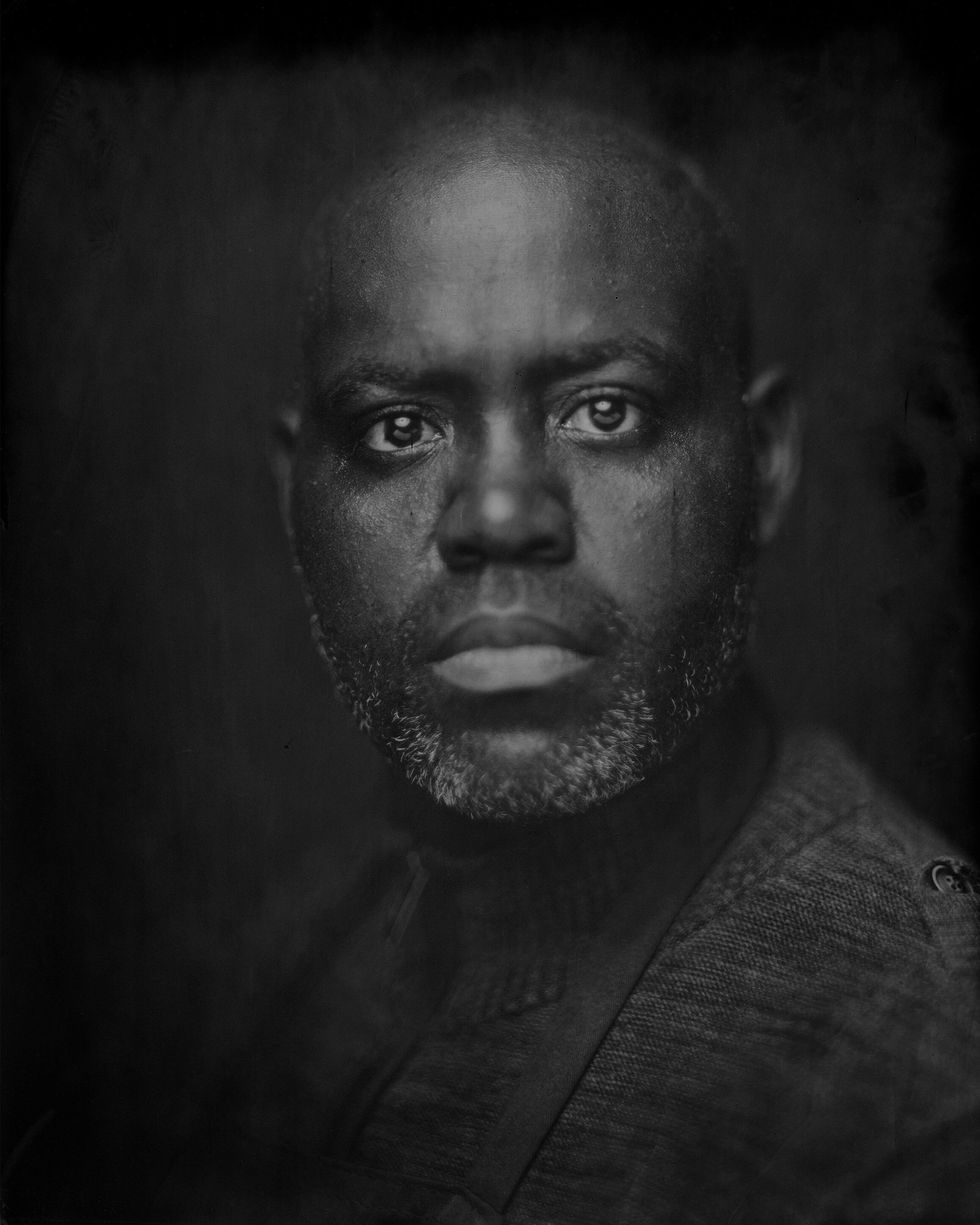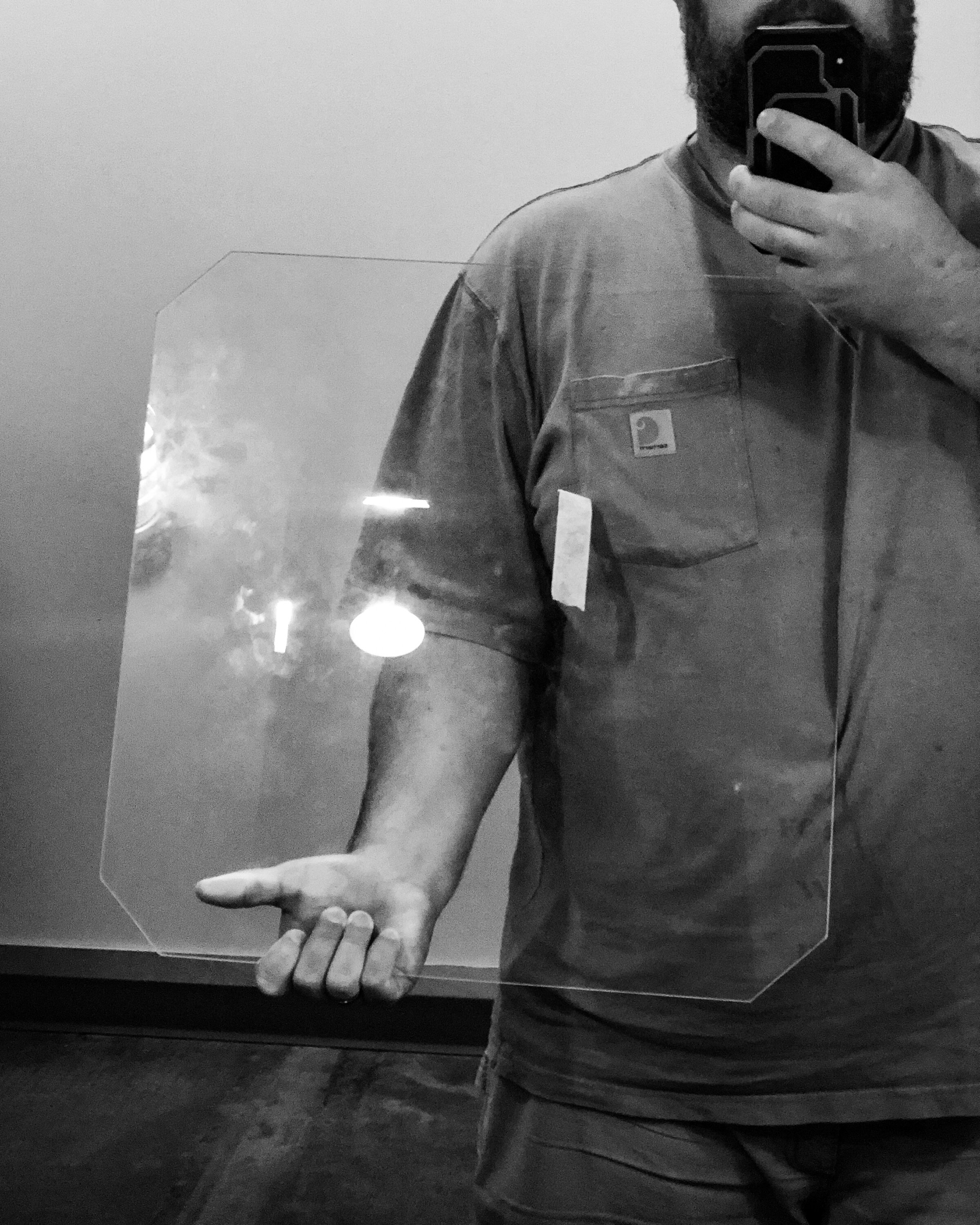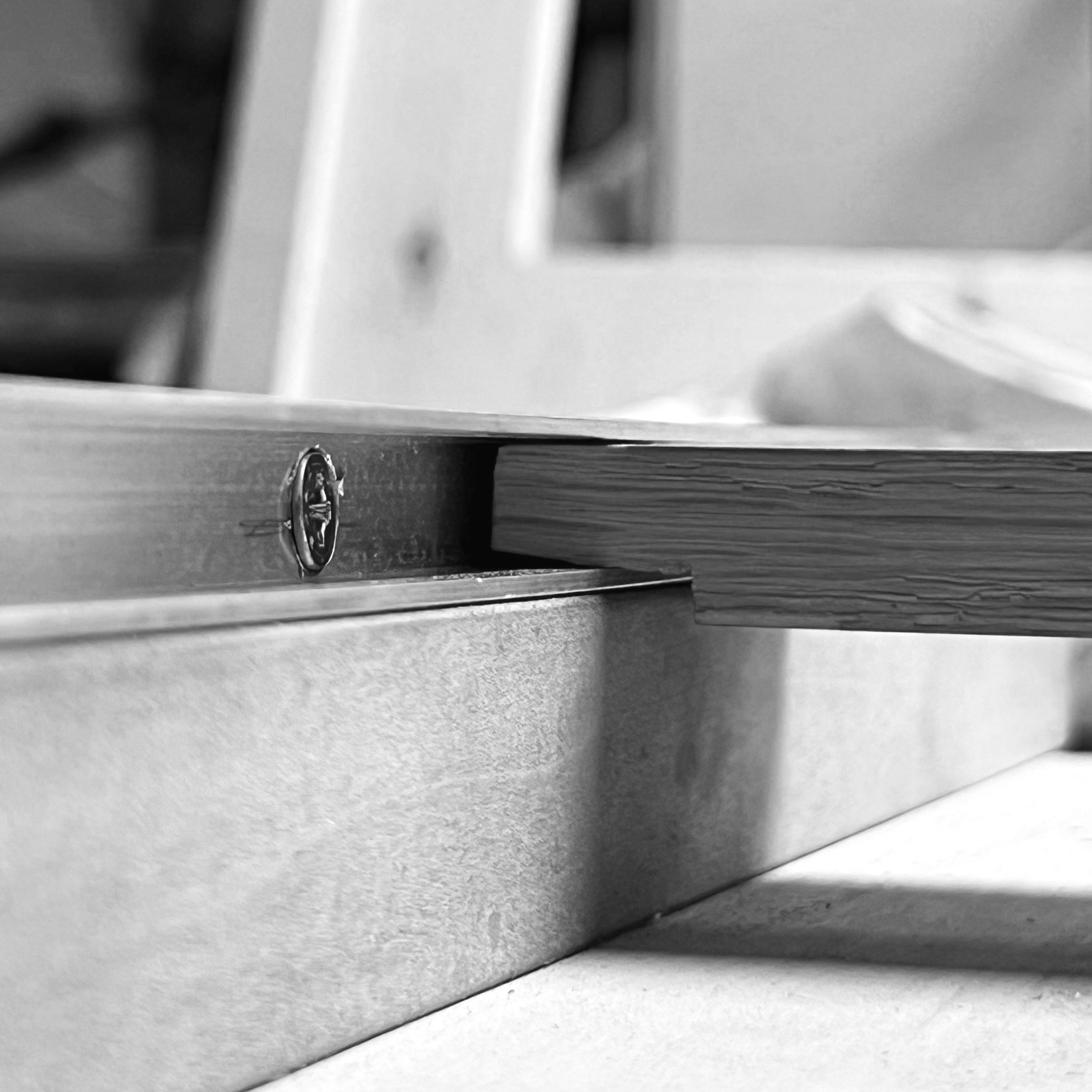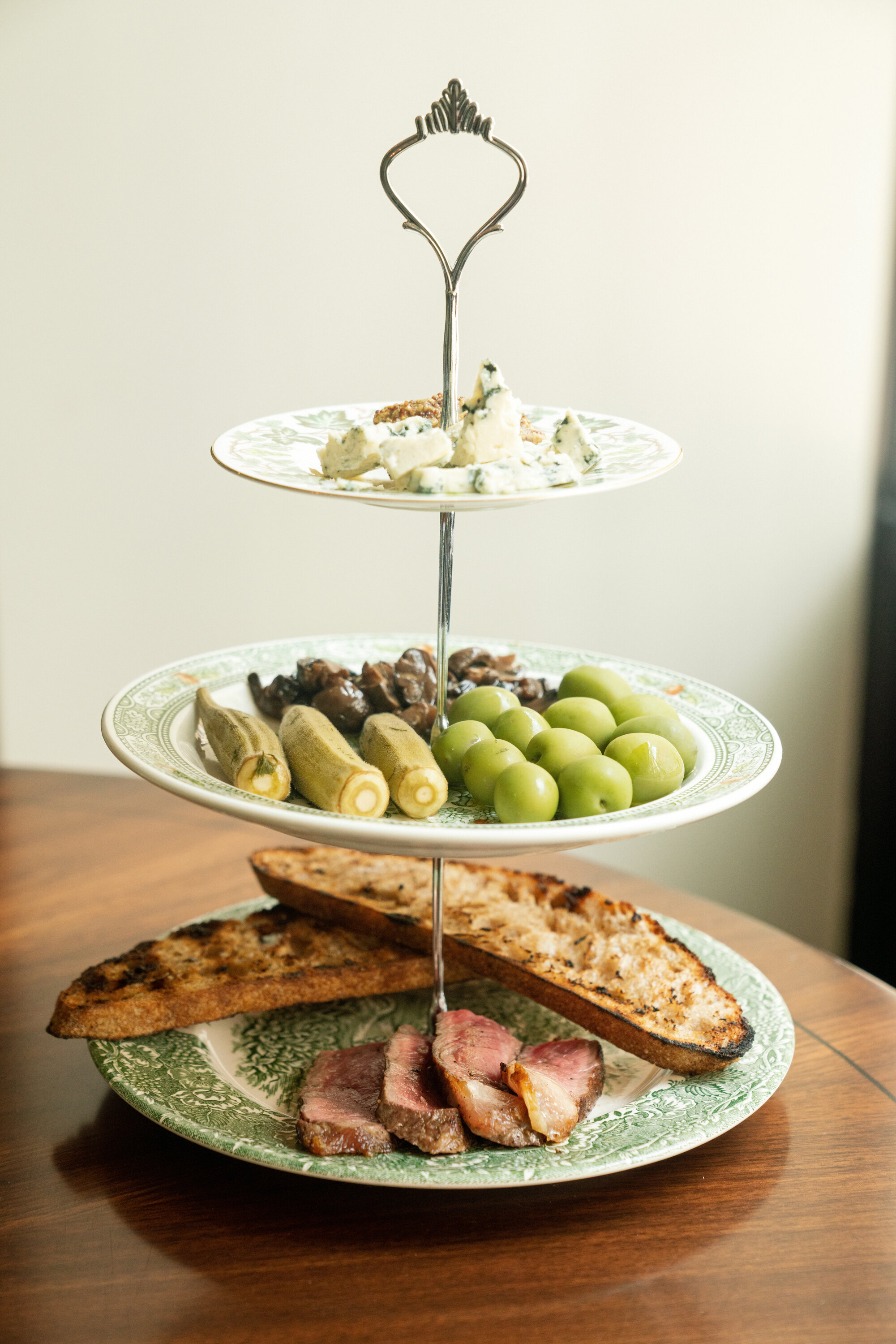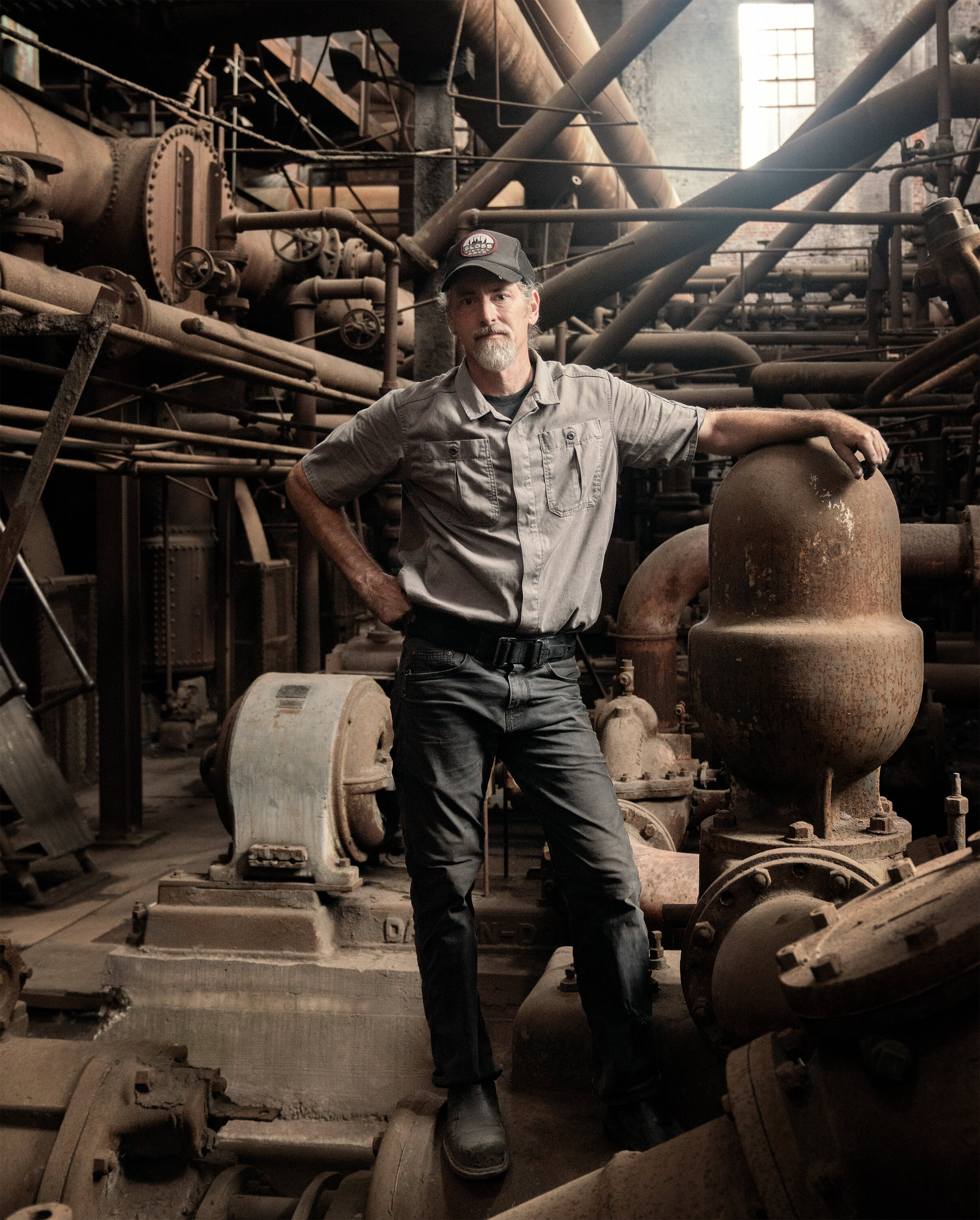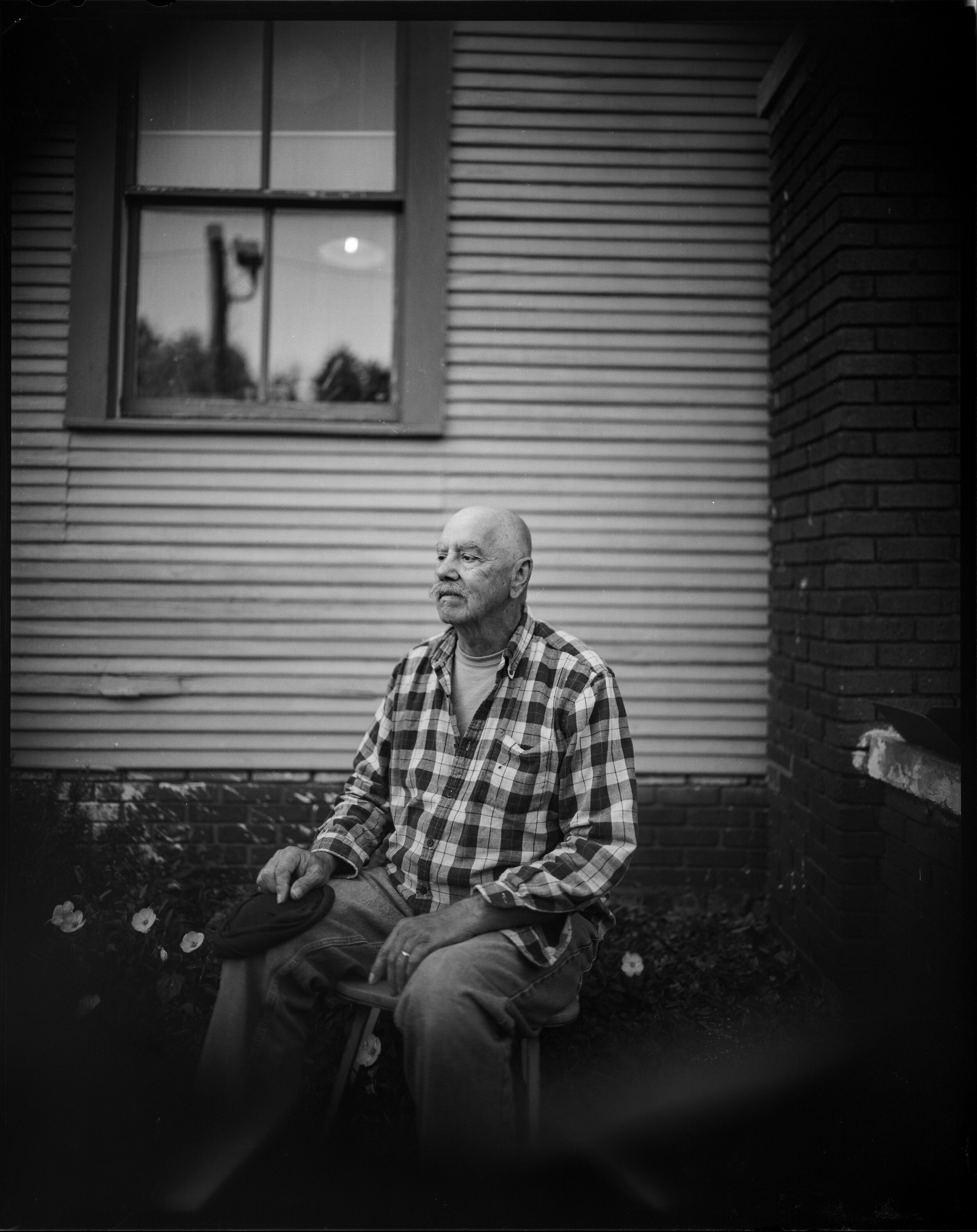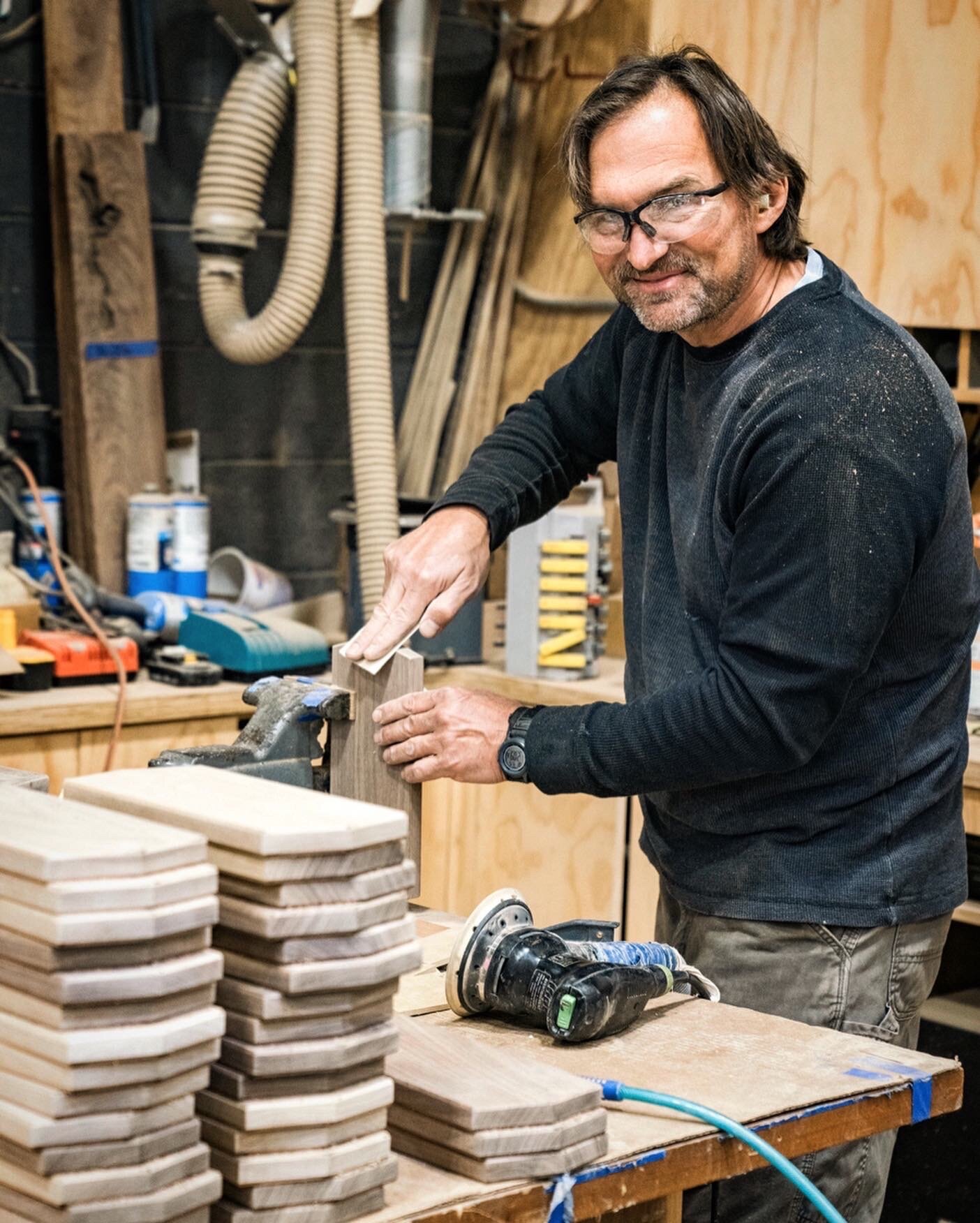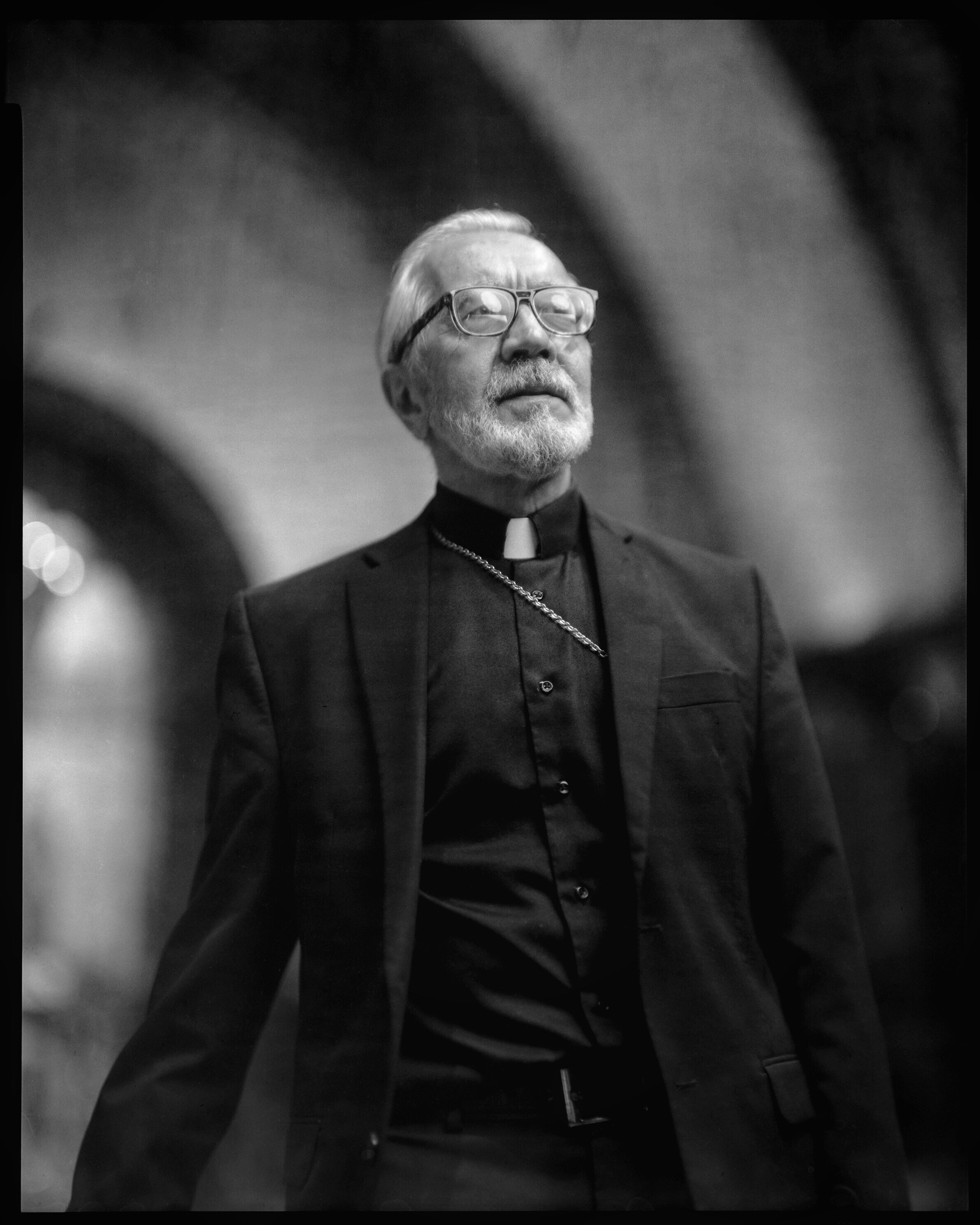I spent last week on assignment with Rashod Taylor in rural Georgia for National Geographic. Rashod was working on his “My America” wet plate series and I was along for support. I took a couple of plates along the way including this portrait of Rashod. Follow along with his work here.
Stephanie on the water
We took a moment to see my dad and his wife a while back—first time since about a year ago.
One of our activities was to take a ride on a pontoon boat and I understand a bit more the appeal of such an outing. The more time I spend at the lake overall the more I get people embracing life on the water, but I bet part of the appeal to me is that we’ve been going during off-peak times when there are less people around. Quiet lake time seems optimal for me.
Mia Owens for The Washington Post
In today’s Washington Post there is a story about Mia Owens’ new fellowship at the White House Historical Association, where she will research the history of slavery in the White House. The fellowship was created in partnership with American University’s Antiracist Research & Policy Center as a means of addressing racism and inequity in America using history as an educational tool. Thanks to Mark Miller for the assignment.
20x20 Camera Build
Over the last year I’ve been supported by the Alabama State Council for the Arts’ inaugural Gay Burke Memorial Fellowship in Photographic Arts.
The fellowship has allowed, in part, me and Jared Ragland to continue working on our project, Where You Come From Is Gone, which explores the representation of memory and absence through a series of wet-plate collodion tintype photographs documenting sites of Native American habitation and removal across the American South.
I’ve also been designing and building an ultra large format 20x20” field camera, and this blog post will serve as the holding ground for build updates.
I’ve researched a camera build of this scale for years, off and on, and have drawn my initial plan in SketchUp, with the goal of having my friends at Alabama Sawyer cut out the parts on their CNC, for the prototype at least. The prototype is made of plywood but the final build will be made of some cherry that’s been saved by my dad from his dad.
Here’s an overview of the camera as animated in SketchUp. It’s a rough sketch, but you get the point.
After the design was completed, I set out to make the ground glass. Several hours of hand-grinding with 5 micron grit (3300 grit sandpaper equivalent) turned into my first homemade proper ground glass. The best I’ve done before this is sandpaper on plexiglass, so this is a big upgrade.
Soon the prototype build should be done and we can continue our wet plate work at a much larger scale.
Here are some progress photos. I’ll update as things progress.
Nearly finished
Done and in the ground glass frame
First pieces, freshly cut at Alabama Sawyer
Lens dry fit. Using a Wollensak Verito Soft Focus ƒ4 18” lens that’s in really terrible shape. But it doesn’t matter too much since this will be used with wet plate work, which is SUPER slow.
Dry fit for dark slide.
Glue up is still in process. Hoping to have a rough build in a couple of weeks. I’ve got the bellows (ordered from CustomBellows.co.uk, because I’d still be fretting over the materials, I’m confident) ready for glue up onto their small frame for mounting in the standards. That’s gonna be a trip.
Chamfering countersinks for the front standard screws
Rough-in of front standard
More to come as this project continues.
Finally, years later, I have made myself continue this project. I was delayed for a long time by either space constraints, work or life schedule, or ennui. I have actually mounted the front standard for real, and am attempting to get this thing finished up. I have maybe a month of usage out of the garage and I’m hoping to get things thing together in that time and start shooting in earnest as soon as possible.
Rough in for the front standard mount / guide.
Imperfectly chamfered U channel affixed to internal (moving) rail. The wood bit on the right will slide forward and back for the front standard movement. Fine focus will be achieved with a worm gear (designed for a 3D printer).
Just when I started rolling on the camera again two things happened. I ran out of room again, and I saw the video below.
Photographer Richard Pence built an 11x14 field camera using lots of off-the-shelf parts, the most obvious and brilliant of them being Arca Swiss rails and mounts.
I am flabbergasted by its simplicity and compact design. The camera is really, really cool. And I’m pissed I didn’t think about my build with easy-to-buy stuff on my mind. I found cameras I thought looked nice and actually buildable for someone with limited woodworking skills. So it’s all custom, handmade parts.
My point is, now, thanks to Richard, I am at a crossroads. Do I fall into the sunk cost fallacy and complete the build I’ve started, or do I abandon the pieces I don’t need and attempt to build a 20x20 version of something similar to this new design.
I’ve got some pondering to do.
A fair amount of time has passed since my previous crossroads and, thanks to an opportunity to potentially shoot 16x20 plates, I decided to make a push to finish the design as it was originally designed, instead of pivoting.
Jared invited me to make plates with him as part of plein air he was invited to and I decided to try to finish in the two-week period I had before the event.
First real steps were to router out some bits of the main base to account for nut heads (underneath) and for the bearing blocks for the fine focus gear. I attached the outer part of the rails to the base with countersunk screws from underneath the base.
I tested the fine focus movement and attached the knob to the coupler.
Jared rolled through the next weekend and we talked through various problem-solving strategies for small elements I’d been putting off. I got the hinges attached to the rear standard and it started looking like a real camera.
I had some chamfering to do that I’d failed to account for in the design (the metal parts were machined really precisely, so anything I forgot before, I had to make up for).
Once the metal bits were on, the next big problems were how to attach the ground glass / plate holders, attaching the bellows to the rear standard, and attaching them to the front standard in a way that was removable so I could collapse the camera easily.
Under the bottom of the frame that holds the ground glass / plate holder is a small run of L channel so that there’s vertical support while attaching.
The latch I’m using (McMaster-Carr’s selection of stuff is incredible) attaches to a nail, which I know is bobo but it works.
Started on the rear bellows. I cut out a frame, clamped it (eventually re-cut the frame and pinned it from the side), and put in a ton of screws and washers. More hackery, for sure, but so far it works.
That all got attached to another frame that was then attached to the rear standard with screws and larger washers.
I tried to get everything else done before I actually mounted the bellows to the rear standard. Including figuring out lens board retention.
We talked about several ways of keeping the access door on the plate holder but I ended up using screen clip things that swivel.
I also did some waterproofing to the parts of the camera that will be touching liquids. I’m sure I’ll find out the places I missed soon enough.
I didn’t really document the way the front bellows attach because I was sort of in the zone, but it’s similar to the lens board attachment, but instead of the knob and washer that holds the lens board on, there’s an L shaped piece of wood that slides down behind the frame that’s attached to the bellows, and that L shaped pieces gets locked into place by two other knobs, from the top. Those knobs screw into T-nuts that are screwed into the top of the front standard (and drilled out to accommodate the bolt part of the knobs).
I have some things I need to tweak, but this is what it looks like all put together.
I also mounted my brass Zeiss Jena 400mm lens. I’m not 100% sure it’ll cover, but according to the old Zeiss brochure, it should cover if stopped down.
I didn’t end up getting to shoot this camera at the plein air, but I’ll report back (for the zero of you reading this) once I’ve shot it.
Helen, a new restaurant from Rob and Emily McDaniel
I had the great privilege to photograph an image library for the newly opened restaurant, Helen. I’ve long been a fan of Rob McDaniel’s food—from his time at SpringHouse or cooking with Jones Valley Teaching Farm—and I’m excited that this new venture, named for Rob’s grandmother, has come to Birmingham. Everything I’ve gotten to taste has been wonderful and I am proud and impressed with them pushing through to open safely during a global pandemic. Welcome to town, you all!
Jerimiah Smith, 2018
This year, I’ve been working on a new camera build as part of the Alabama State Council for the Arts’ inaugural Gay Burke Memorial Fellowship in Photographic Arts. I’m sure the build will have its own blog post once the camera is done, but in the meantime I’ve been thinking a lot about wet plate and I’m getting excited to shoot more soon.
This is a portrait of photographer Jerimiah Smith, taken on New Year’s Eve 2018. Jerimiah is also an avid analogue photo nerd like me and you can find his work here and here.
Marshall Christie of Sloss Metal Arts
I’ve gotten to work with the folks over at Sloss Metal Arts off and on for a few years and we got together to make some portraits of the crew this past week. Marshall is the Director of Metal Arts and this shot of him in the old Blower Room is one of my favorites from the day. The blower room is massive and was used to force air into two equally massive foundry furnaces back when Sloss was in full swing.
William, June 2020
William, my father in law, photographed June, 2020.
William, April 2020
William, my father in law, photographed in April of 2020.
Beekeeping, social distance style
This weekend we checked in on our bees and we actually got to spend some time with Jill. We’ve all been self quarantining for what feels like forever, but we still made every effort to stay a safe distance from each other.
We learned, in this visit, that our walk-away split seems to have taken (we saw eggs and larvae, which means there is a queen) and that one of our hives that had over-wintered had way too much space and is weak. We’re working on helping them out.
Nourish Foods / Alabama Sawyer
My friends over at Nourish Foods, a national direct-to-customer meal service based here in Birmingham, have been putting together some amazing boxes lately. A recent offering was called the Southern Charcuterie Box and it included not only our honey, but fabulous products from several of our friends.
The cheese board included in the box was made by Cliff at Alabama Sawyer and I work so closely to (and with) them, I couldn’t help but document the process. Cliff was able to hand make ~60 of these boards in just a coupe of days, and with a small on his face, too.
Porch times
With all that’s going on in the world these days, we’ve been staying close to home and spending a fair amount of time on the porch. Lots of dog time spent panting in the sun and a quick haircut for my father-in-law, William.
Southern Foodways Alliance Oral History Project
I’ve been making photographs as part of an oral history for the Southern Foodways Alliance for a while now and they’ve published them, so I’m excited to share some of that work here. The oral history is called Faith and Foodways in Alabama and it examines how people find fellowship in their faith communities and what role food plays in that community, and the interviews were conducted by Michelle Little. I shot the bulk of the stories digitally but I brought along my 8x10 to bring a different perspective and to encourage myself to engage some of the portraits a bit differently.
Father Paul Costopoulos of Holy Trinity + Holy Cross Greek Orthodox Church here in Birmingham.
Fr. Paul has long been connected to the Greek food festival the church puts on here in Birmingham every year.
Rabbi Stephen Slater from Temple Beth-El here in Birmingham.
He’s got a fascinating story of how he came to rabbinical life by way of being raised in west Africa by Baptist missionary parents. Quite a road.
This is Lucy Heidorn whom I met at a Sacred Harp singing up at Old County Line Church in Corner, Ala.
Her family has been meeting at this place to host a Singing for a long time—in fact, Stephanie and I were there for the 100th anniversary of the gathering.
David Ivey not only has been attending singings since before he was one year old, he’s also the president of the Sacred Harp Musical Heritage Association. He and his wife travel nearly every weekend to attend singings, including this one at Old County Line Church.
Lucy Heidorn stands with members of her immediate and extended family in front of Old County Line Church, where the family has been singing, annually, for 100 years. We made this photo to go into their archive of family photos which documents their family’s connection to this place and activity.
More from these oral histories to come, soon. To hear interview clips and read the full interviews, find the SFA page here.
Hoar Construction rebrand launch
I’m so glad to be able to share a new body of work made for Hoar Construction.
Their whole philosophy is “always in process” and the process of making this work was a phenomenal collaboration with an incredible creative team and a trusting client. Clarity Studio brought me on to photograph the way Hoar works, from start to finish, and be the visual voice of the rebrand. We spent several days between their offices and job sites to tell the story of the people behind the projects they make and capture the feeling of their commitment to quality and the constant refinement of their process.
We had an overview of how we wanted everything to feel, visually, and I was given the freedom to photograph what jumped out at me (with safety advisers on-hand, of course) and I couldn’t be happier with how everything came together.
My thanks to David, David, Clay, Jessica, and the whole crew involved who made this such an incredible project to work on.
Bonus, my dear friend Bob Miller produced an incredible motion piece to go along with the brand launch. Be sure to watch that below.
Foggy morning
Every winter I look forward to driving this road during the fog. It’s a path a travel almost daily, but it’s the best on mornings like these.
Kathmandu young monks
Thinking about our trip to Nepal last year. We visited a monastery the first day we got to Kathmandu and got to see some young monks early in training. The kiddos in the second shot were in week one of their journey.
David Strackany in Northern California back in 2007.
David Strackany in Northern California, 2007.
David Strackany toured then as Paleo and, incredibly, toured for for a whole year while writing, recording, and releasing a new song EVERY DAY, all while managing his own bookings and only rarely knowing exactly where he’d sleep any given night.
I met him in Birmingham at the late, great Bottletree Cafe and was immediately captivated. We ended up making some photos together later that night and the next day, and a few weeks later I ended up on tour with him along the west coast to document a part of his journey. From San Francisco to Seattle over the course of two weeks, I’d see first hand the amount of effort he put in to his daily practice.
The project that started on Easter in Florida, ended in Washington DC on Tax Day. David and I (and Taylor Bruce) got to tour the white house courtesy of Jared Ragland and the last show of the tour was still one of the more emotional performances I’ve seen—crossing the finish line of a 365 day ultramarathon.
Glad to have been a small part of that.
Billy Reid
Billy Reid always looks sharp.
Ian Curcio
Ian Curcio and Matthew Franklin Carter
My friends Matthew Franklin Carter and Ian Curcio visited Birmingham this week for work so we took the opportunity to share a meal and make some plates. Plus I got to introduce a couple more dorks to the tintype process.
Matthew Franklin Carter
Chef Rob Connoley
Chef Rob Connoley's Bulrush, St. Louis
I recently visited St. Louis for Covey Rise to check out what foraging wunderkind @chefrobconnoley was up to at his new restaurant Bulrush.
Rob was kind enough to show us a local foraging spot and how all this good stuff gets employed. Extra bonus was meeting Lexi, his pup whom he taught to forage with him.
From elderberries to sorrel to chanterelle and a million things in between, they’re digging deep into their ozark heritage at Bulrush, all while keeping their kitchen zero-waste.
Look for the new issue of @coveyrise for some recipes and more about Chef Rob Connoley and his team.
Beverage Director for Bulrush, Chris Voll
“Bald Fact”
Chanterelle-infused vodka
“Only Day-Dreams”
